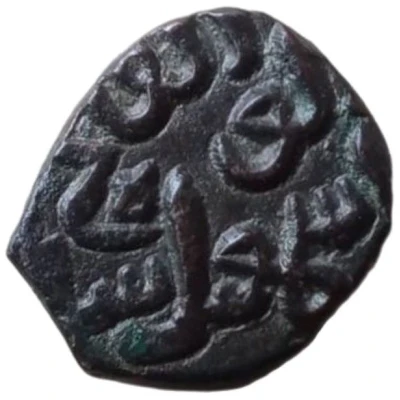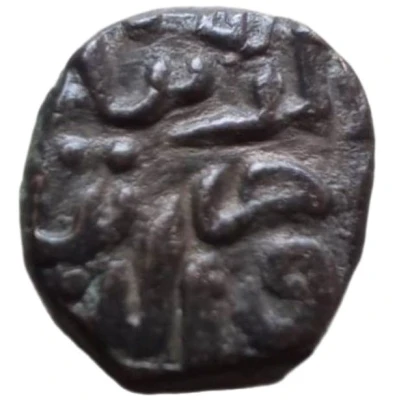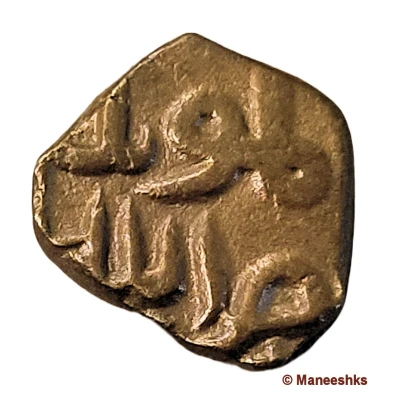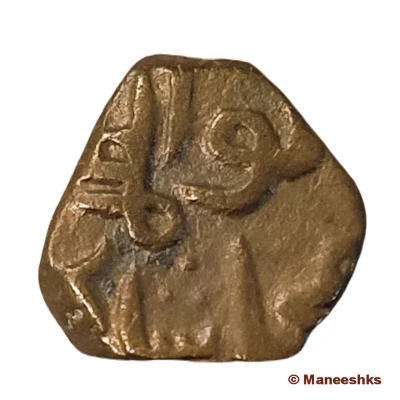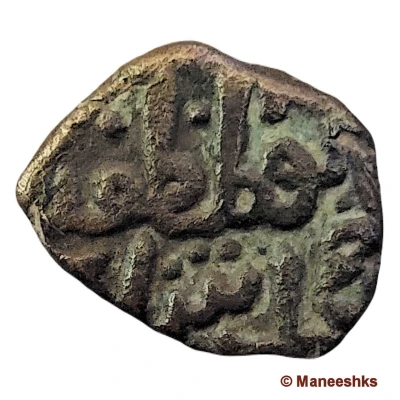
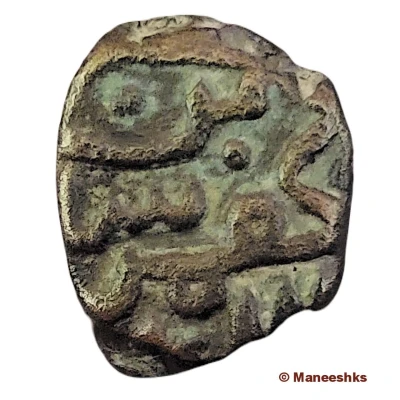

Falus - Muhammad Shah I ND
| Copper | 3.48 g | 15 mm |
| Issuer | Sultanate of Bahmani (Indian Sultanates) |
|---|---|
| Sultan | Muhammad I (1358-1375) |
| Type | Standard circulation coin |
| Years | 1358-1375 |
| Value | 1 Falus (1⁄48) |
| Currency | Tanka (1347-1518) |
| Composition | Copper |
| Weight | 3.48 g |
| Diameter | 15 mm |
| Thickness | 3.2 mm |
| Shape | Round (irregular) |
| Technique | Hammered (Weight varies from 3-3.6g) |
| Orientation | Variable alignment ↺ |
| Demonetized | Yes |
| Updated | 2024-10-05 |
| Numista | N#137916 |
|---|---|
| Rarity index | 90% |
Reverse
Ibn bahman shah al-sultan
["ibn" above "shah" above "bahman"]
Edge
Plain
Comment
This type (GG# BH38) is same as BH37 N#150320 except the way words are arranged on Reverse.
Coinage
The coins of Muhammad Shah I depart from the Dehli prototypes and the style becomes specifically Bahmanid. Copper coins are of 4 types ranging in weight from 1.3g to 3.6g and in denomination from Falus to Half Falus.
History
A revolt by a group of Muslim nobles against Muḥammad ibn Tughluq that began in Daulatabad in 1345 culminated in the foundation of the Bahmani sultanate by Ḥasan Gaṅgū, who ascended the throne of Daulatabad as ʿAlāʾ al-Dīn Bahman Shah in 1347 and soon moved his capital to the more centrally located Gulbarga on the Deccan plateau.
Much of the political and military history of the Bahmanī sultanate can be described as a generally effective attempt to gain control of the Deccan and a less successful effort to expand outward from it. The initial period of consolidation was followed by a much longer period of intermittent warfare against Malwa and Gujarat in the north, Orissa and the Reddi kingdoms of Andhra in the east, and Vijayanagar in the south.
Interesting fact
The Falus coin of Muhammad Shah I from the Sultanate of Bahmani is interesting because it was issued during a time of great turmoil and political upheaval in the region. Despite this, the coin still maintains a high level of craftsmanship and design, showcasing the skill and artistry of the mint workers who created it. Additionally, the use of copper as the material for the coin was a common practice during this time period, and it adds to the coin's historical significance as a representation of the economic and trade practices of the era.
